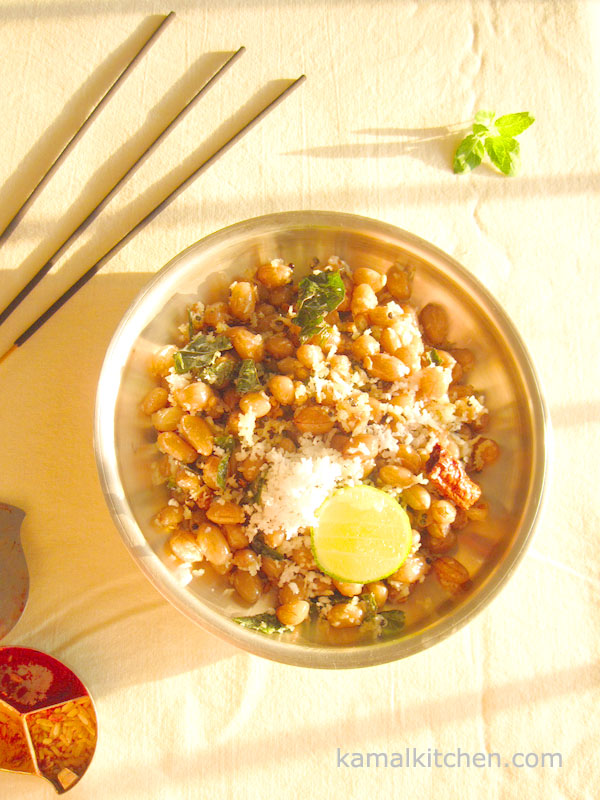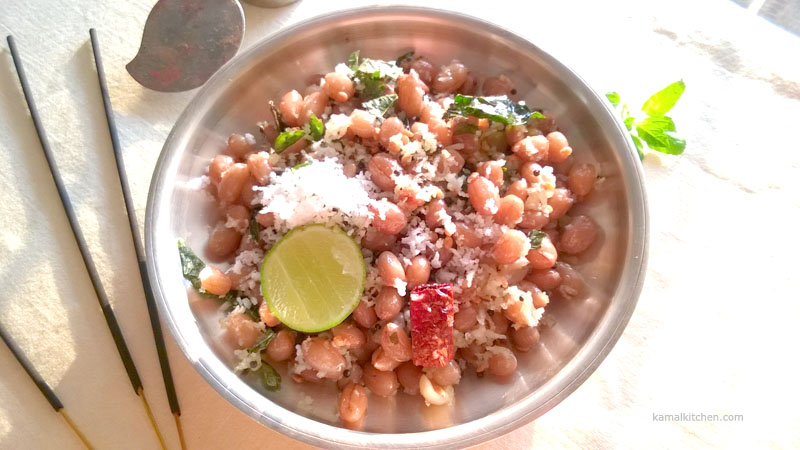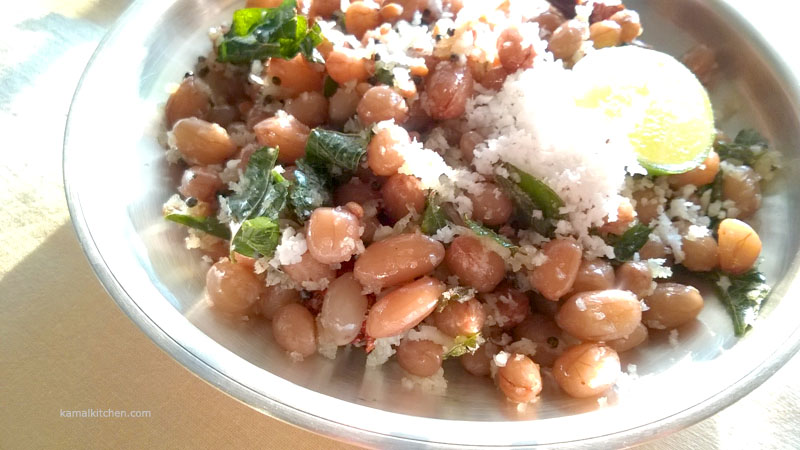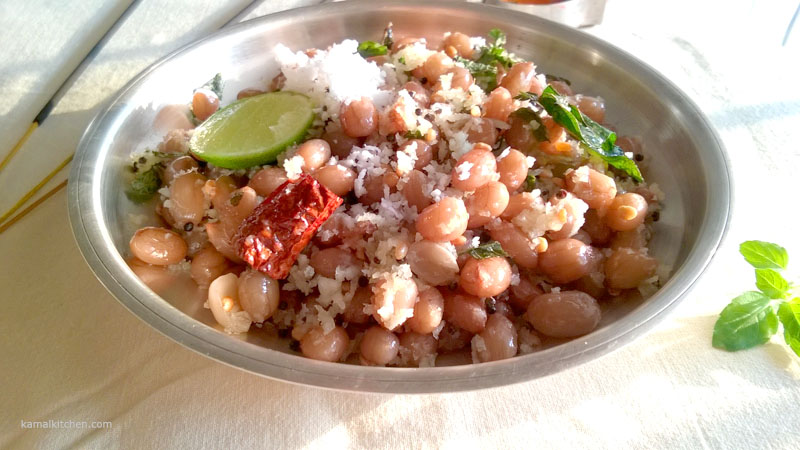Peanut Sundal is an easy nutritious salad or snack that can be very addictive. And no, you don’t have to wait for any holy occasion to indulge in it.
I recently blogged about the Bhog festival at the Four Points by Sheraton Pune. Navratri or Durga Pooja has spurred local restaurants and hotels to hold many different festivals. The festival offerings differ by region and local culinary influences kick in. Traditionally, any food offered to the Goddess was made without using any onion or garlic. To this day, we try to follow this principle while cooking for any festive occasion. Some communities like the Jains never eat onion or garlic. So this no onion no garlic recipe seems timely.

I have plenty of other recipes on this blog that are no onion no garlic of course, like the Dahi Wada, AamTi and a lot of other daals from my ebook 30 Days of Daal. have you checked it out yet?
Sundal is mostly a concept from Southern India. One of our old Tamil neighbors always made this during Ganesh Pooja and we used to pounce on it. Of course, at that time I didn’t know it was called sundal . Sundal is the essential offering to the Goddess during the Kolu or Golu festival which is the South Indian counterpart of Navratri.
The Goddess Durga holds a lot of importance in the Hindu religion. She is known by different names like Maata Rani or Maa Vaishno Devi, Shitla Mata, Jwala ji in Himachal, Amba or Jagadamba in Maharashtra, and of course Durga in Bengal.

Sundal can be made with chickpeas, chana daal, kidney beans, black eyed peas and so on. A different sundal is made every day during the nine days. As people visit their neighbors to pay respects to the Goddess, they are handed over the sundal prasadam in bowls made from dried leaves.
For the peanut sundal, peanuts and coconut are the essential ingredients. The traditional South Indian taste needs a tempering of curry leaves and urad daal. And that is about it.
Peanut Sundal is such a simple recipe – even a novice or child can easily make it.
Fresh grated coconut is abundant in India, of course. In the US, fresh grated coconut is available in frozen form in Indian grocery stores.
A must have appliance for grating the coconut is this coconut grater.

This peanut sundal is a vegan recipe – yay! If you don’t like peanuts or are allergic to nuts, just replace these with chickpeas or kidney beans as I said above.
The only thing to watch out for here is that the beans/ nuts should have a slight bite and they should not be too soggy. My peanuts remained a bit raw for my taste so they definitely need to be soaked for a long time and cooked really well.
The recipe for peanut sundal follows – hope you try this and use this as a snack or side dish.
Peanut Sundal – No Onion No Garlic Recipe
Ingredients
- 1 cup raw peanuts
- 1 Tbsp oil
- 1 tsp black mustard seeds
- ¼ tsp Hing or Asafetida
- ½ tsp white urad daal
- 1 dry red chili broken
- 4-5 curry leaves
- 2-3 Tbsp fresh grated coconut
- Salt to taste
- Fresh lemon juice
Method
- Soak peanuts in 2-3 times the water overnight or at least 8-10 hours.
- Boil them with salt until they are soft but retain a bite. You can also pressure cook them.
- Drain the boiled peanuts and set aside.
- Heat oil in a wok.
- When oil gets hot, add mustard seeds and let them splutter well.
- Add hing and urad daal. Lower the heat because the urad daal burns quickly.
- Add broken chili and curry leaves.
- Stir once and if urad daal is light brown, add the peanuts. If the daal is darker or black, it may have burnt.
- Add salt and mix well. Stir for a couple of minutes. Switch off heat.
- Add 2 Tbsp of the fresh grated coconut and mix well.
- Garnish with more coconut while serving.
- Peanut Sundal can be served hot, cold or at room temperature.
- Note – Want more? Just double or triple the recipe.
SO, do you agree that every recipe need not have onion or garlic? Please hit the Comment button and let me know.

Leave a Reply